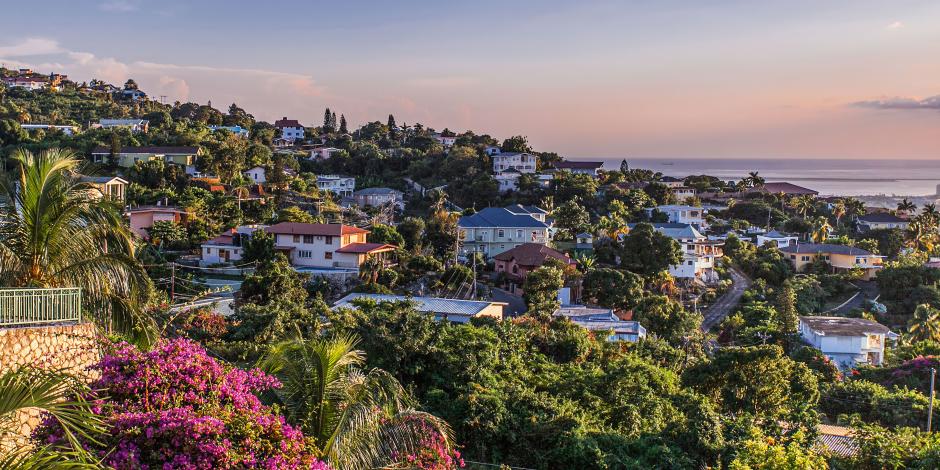History
The island of Jamaica was visited by Christopher Columbus in 1494 and became a Spanish colony in the 16th century. By 1519, most of the country’s native inhabitants, the Taino, had died as a result of violence or illness. The native population was replaced by African slaves. In 1655, England took Jamaica by force and created a plantationPlantageplantation-based economy that produced crops such as sugar, cocoa and coffee.
In 1834, slavery was to abolish sth.etw. abschaffenabolished in many parts of the British Empire, freeing around 250,000 slaves in Jamaica, many of whom became farmers. In 1958, along with other British CaribbeankaribischCaribbean colonies, Jamaica became part of the Federation of the West Indies. In 1961, Jamaica left the federation, becoming an independent country in 1962.
Government
Jamaica is part of the Commonwealth; the head of state is Queen Elizabeth II. The government is a parliamentary democracy. Andrew Holness is the current prime minister.
Geography
In the Caribbean Sea, south of Cuba, Jamaica is the third-largest island in the region. It has a total area of 10,991 square kilometres — about the same size as Kosovo. Jamaica has a tropical climate, which is typically hot and humidfeuchthumid.
People
The country’s population is a little over 2.8 million. The median age is 29.4 years, and about 43 per cent of the population is under 25. The average life expectancy is 75.75 years. The official language of Jamaica is English, but most people there speak English patoisPatois (hier: jamaikanisches Kreolisch)patois.
Economy
In 2013, Jamaica was close to economic collapse. The IMF (International Monetary Fund)IWF (Internationaler Währungsfonds, Weltwährungsfonds)IMF, the World Bank and the Inter-American Development Bank provided a $2 billionMilliarde(n)billion support package that, along with economic reforms, have led to a remarkable turnaroundTrendwende, Umschwungturnaround.
Today, Jamaica’s economy is driven largely by the service industry, which to account for sth.etw. ausmachenaccounts for 70 per cent of GDP. The country’s most important sources of foreign exchangeDevisenforeign exchange are connected to tourism, remittances and exports of bauxite/aluminium.
Another key sector is agriculture, which accounts for almost 9 per cent of GDP (gross domestic product)BIP (Bruttoinlandsprodukt)GDP. Other important industries include miningBergbaumining, manufacturingHerstellung, auch: Fertigungsindustriemanufacturing, construction, telecommunications, and financial and insuranceVersicherunginsurance services.
In 2019, unemployment had fallen to a record low of 7.72 per cent, nearly half the rate of 2012, although this has increased a little since the pandemic began.
Source: The World Factbook, Central Intelligence Agency
To find out about the situation of Jamaican PWDS (Persons with Disablities), click here.
Neugierig auf mehr?
Dann nutzen Sie die Möglichkeit und stellen Sie sich Ihr optimales Abo ganz nach Ihren Wünschen zusammen.



